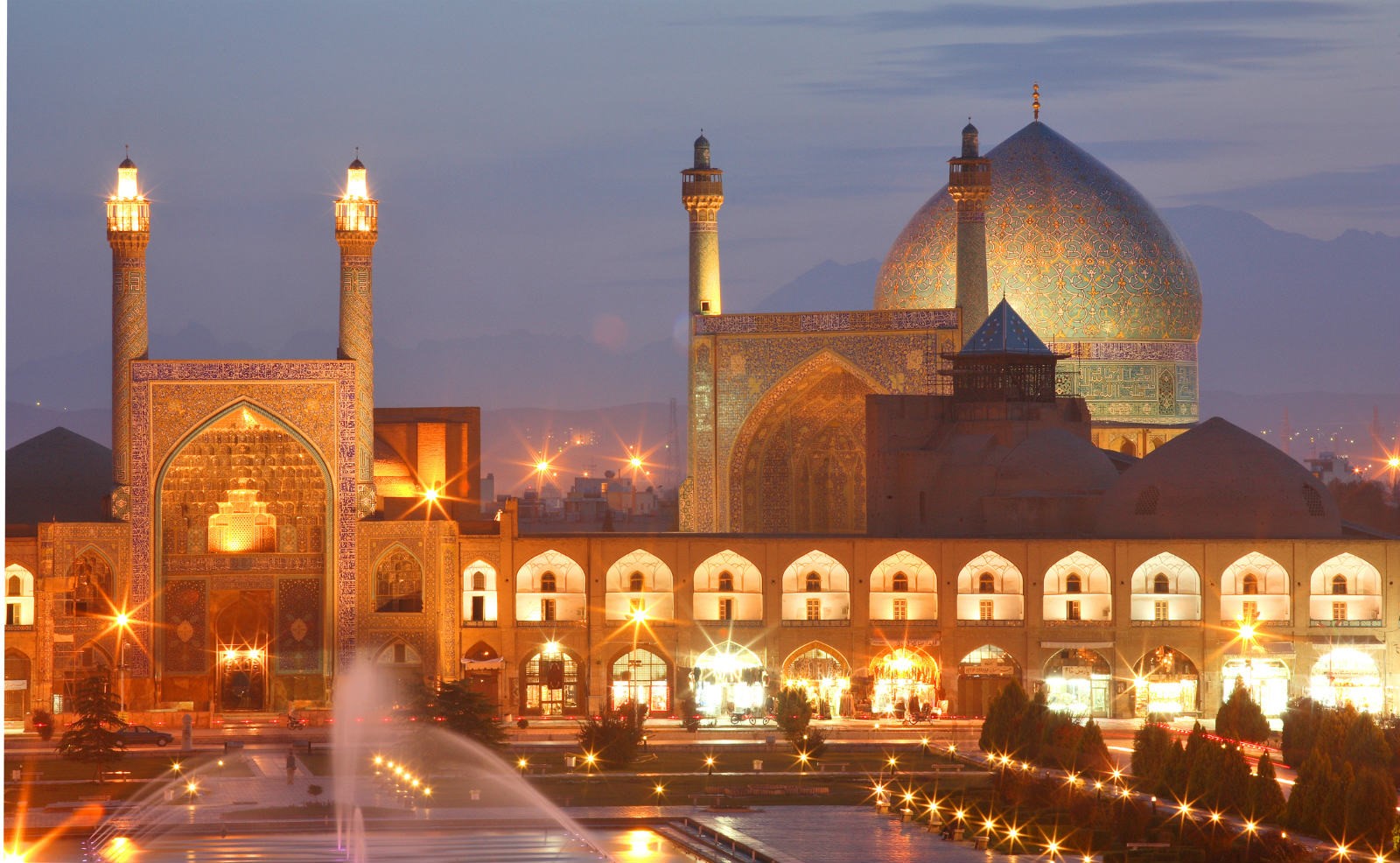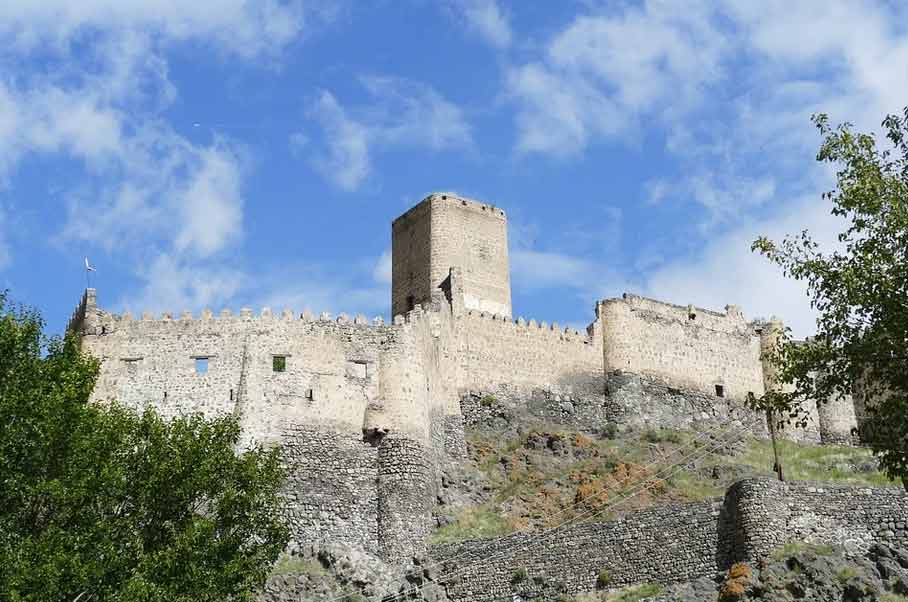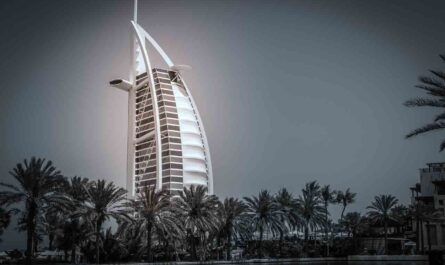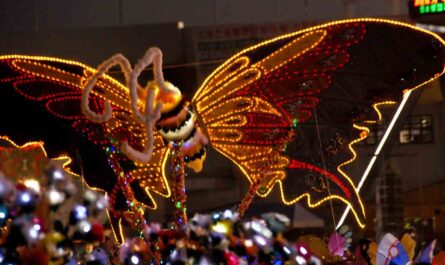What are some of the interesting facts about Iran, a country of profound historical significance and cultural richness, that sits at the crossroads of the Middle East, Central Asia, and the Caucasus, shaping its identity as a pivotal player in global geopolitics? With a history spanning millennia, Iran’s heritage is a tapestry woven with the threads of ancient civilizations, including the Persian Empire, which once ruled over vast expanses of territory. Today, Iran stands as an amalgamation of tradition and modernity, navigating the complexities of its religious and political landscape while striving for socio-economic progress. In this article, I will talk about some interesting facts about Iran.
Interesting Facts About Iran: History, Culture, Travel, Food
Its capital, Tehran, pulsates with energy, embodying the dichotomy of a metropolis deeply rooted in its past yet embracing the innovations of the present. The country’s diverse landscapes, from the lush greenery of the Caspian Sea region to the arid deserts of central Iran, offer a glimpse into its natural beauty and geographical diversity. However, Iran also grapples with various challenges, including economic sanctions, political tensions, and social reforms, as it seeks to carve its path in the 21st century. Here are some interesting facts about Iran:
1. The Rich Cultural Tapestry of Persia
Iran, historically referred to as Persia, stands as a testament to a cultural legacy steeped in antiquity, tracing its roots back several millennia. Its heritage is a mosaic woven from diverse threads of civilization, each contributing its unique hue to the vibrant fabric of Iranian culture. From the grandeur of ancient Persia to the spiritual profundity of Islam, and the intricate tapestry of neighboring influences, Persia’s cultural landscape is a rich tableau awaiting exploration.
With its storied past as a cradle of civilization, Persia has nurtured a wealth of artistic, architectural, and intellectual achievements that continue to inspire awe and admiration worldwide. From the majestic ruins of Persepolis to the intricate beauty of Persian carpets, the cultural legacy of Iran is a treasure trove of human creativity and ingenuity, offering glimpses into the splendor of bygone eras.
2. A Fusion of Diverse Influences
The cultural identity of Iran is a harmonious fusion of myriad influences that have converged and intertwined throughout its history. From the ancient Zoroastrian traditions of Persia to the profound spiritual insights of Islam, Iranian culture is a tapestry woven from threads of diverse origins. The legacy of Persian poets like Rumi and Hafez resonates through the corridors of time, their words echoing the universal truths of love, beauty, and transcendence.
In addition to its indigenous heritage, Iran has been shaped by the crosscurrents of neighboring civilizations, each leaving its indelible mark on the country’s cultural landscape. From the opulent artistry of the Safavid Empire to the architectural marvels of Timurid and Seljuk dynasties, Iran’s cultural heritage bears the imprint of a rich tapestry of influences that have shaped its identity.
3. Tehran: A Dynamic Urban Center
At the heart of Iran’s cultural tapestry lies Tehran, the bustling capital city that serves as a vibrant nexus of tradition and modernity. Nestled against the backdrop of the majestic Alborz Mountains, Tehran is a city of contrasts, where gleaming skyscrapers stand in juxtaposition to ancient bazaars bustling with activity.
As the political, economic, and cultural epicenter of Iran, Tehran pulsates with energy, offering visitors a glimpse into the country’s dynamic spirit. From the historic lanes of the Grand Bazaar to the avant-garde galleries of contemporary art, Tehran embodies the eclectic synthesis of tradition and innovation that defines Iranian culture. Amidst the hustle and bustle of daily life, the city’s parks and gardens provide tranquil oases where locals and visitors alike gather to unwind and reflect amidst the verdant splendor of nature.
4. Isfahan: A Masterpiece of Islamic Architecture
Isfahan, hailed as a jewel of Islamic architecture and designated as a UNESCO World Heritage Site, stands as a testament to the grandeur and beauty of Persian craftsmanship. Its skyline is adorned with minarets and domes, each intricately embellished with geometric patterns and calligraphic motifs that evoke a sense of spiritual reverence.
The city’s majestic mosques, such as the Masjed-e Shah and the Masjed-e Sheikh Lotfollah, are architectural marvels that inspire awe with their intricate tilework and soaring vaulted ceilings. Isfahan’s palaces, such as the Ali Qapu and the Chehel Sotoun, offer glimpses into the opulent lifestyle of Persian royalty, with their lush gardens and ornate frescoes.
5. Shiraz: Cradle of Poetry and Viticulture
Shiraz, renowned as the city of poets and wine, embodies a cultural heritage steeped in literary tradition and viticultural excellence. It was here, amidst the vineyards and gardens of Shiraz, that celebrated poets such as Hafez and Sadi found inspiration for their timeless verses, which continue to resonate with audiences across the globe.
The city’s historic landmarks, such as the Tomb of Hafez and the Eram Garden, serve as pilgrimage sites for poetry enthusiasts seeking to pay homage to these literary luminaries. Meanwhile, Shiraz’s vineyards produce some of Iran’s finest wines, adding to the city’s allure as a haven for connoisseurs of both literature and libations.
6. Rug Hooking: Weaving Threads of Tradition
In certain corners of Iran, the ancient art of rug hooking flourishes as a cherished tradition passed down through generations. This intricate craft involves the skillful weaving of wool or silk strips into elaborate patterns, creating carpets of breathtaking beauty and complexity.
From the bustling bazaars of Tehran to the remote villages nestled amidst the rugged landscapes, rug hooking serves as a vibrant expression of Iranian cultural heritage, with each knot and stitch embodying centuries of artistic ingenuity and craftsmanship.
7. Protecting Precious Wildlife: The Plight of Endangered Species
Iran’s diverse landscapes harbor a wealth of biodiversity, yet many of its native species teeter on the brink of extinction. Among these imperiled creatures are the Asiatic cheetah and the Persian leopard, majestic predators whose dwindling numbers underscore the urgent need for conservation action.
In response to this ecological crisis, dedicated efforts are underway to safeguard these iconic species and their habitats, from establishing protected areas to implementing community-based conservation initiatives. As stewards of Iran’s natural heritage, conservationists strive to ensure a future where these magnificent animals can roam free, their presence a testament to the country’s rich ecological tapestry.
8. The Green Gold: Iran’s Pistachio Legacy
Nestled amidst the arid landscapes of Iran, pistachio orchards stretch as far as the eye can see, their verdant hues a testament to the country’s status as a premier producer of this prized nut. Renowned for their exceptional quality and distinctive flavor, Iranian pistachios have earned a reputation as some of the finest in the world.
From the bustling markets of Isfahan to the verdant groves of Kerman, pistachios hold a place of honor in Iranian cuisine and culture, their versatility and nutritional value making them a staple ingredient in a myriad of dishes. As guardians of this green gold, Iranian farmers meticulously tend to their orchards, ensuring a bountiful harvest that sustains both livelihoods and traditions for generations to come.
9. Caspian Coast: Nature’s Coastal Paradise
Along the shores of the Caspian Sea lies a paradise of natural beauty and seaside serenity, beckoning travelers to unwind amidst its azure waters and verdant landscapes. The Caspian coast boasts pristine beaches, where soft sands meet gentle waves, offering an idyllic setting for sunbathing, swimming, and water sports.
Resorts dot the coastline, providing luxurious accommodations and panoramic views of the sea. Beyond its beaches, the Caspian region is home to lush forests, cascading waterfalls, and charming villages, inviting exploration and adventure amidst nature’s bounty.
10. Iranian Carpets: Masterpieces of Textile Artistry
Persian carpets stand as exemplars of textile artistry, renowned worldwide for their unparalleled beauty and craftsmanship. Woven with meticulous precision and centuries-old techniques passed down through generations, these carpets boast intricate designs that tell stories of Persian history and culture. Each knot and weave is a testament to the skill and artistry of Iranian carpet makers, who imbue their creations with vibrant colors and mesmerizing patterns.
From the elaborate floral motifs of Isfahan to the geometric elegance of Tabriz, Persian carpets are not merely floor coverings but cherished works of art that adorn homes and institutions with timeless elegance and sophistication.
11. Persepolis: Gateway to Achaemenid Splendor
Persepolis, nestled amidst the rugged landscapes of Iran, serves as a portal to the majestic realm of the Achaemenid Empire. This ancient ceremonial capital stands as a testament to the grandeur and opulence of one of history’s most formidable civilizations. Carved into the foothills of the Zagros Mountains, Persepolis beckons visitors to behold its imposing ruins, where towering columns and intricately carved reliefs whisper tales of a bygone era.
As the seat of power for the Achaemenid rulers, Persepolis bore witness to the pomp and pageantry of imperial ceremonies, where kings and emissaries from distant lands gathered to pay homage to the might of Persia. The sprawling complex of palaces, audience halls, and ceremonial structures offers a glimpse into the architectural prowess and artistic finesse of ancient Persia, showcasing a harmonious blend of craftsmanship and grandiosity.
12. Susa: Unraveling the Layers of Antiquity
Susa, an ancient city shrouded in the mists of time, stands as a silent sentinel to the ebb and flow of history in the region. Nestled along the banks of the Shavur River, this archaeological marvel unveils a tapestry of civilizations that have left their mark upon its hallowed grounds. From the remnants of Elamite temples to the vestiges of Achaemenid palaces, Susa bears witness to the passage of epochs, each layer of its storied past revealing new insights into the cultural mosaic of ancient Iran.
As archaeologists delve into the depths of Susa’s ruins, they uncover a treasure trove of artifacts and inscriptions that offer tantalizing clues about the city’s role as a crucible of civilization. From the reign of Hammurabi to the conquests of Alexander the Great, Susa has borne witness to the rise and fall of empires, its ruins a testament to the enduring legacy of human endeavor and ambition.
13. Caspian Sea: Jewel of the North
The Caspian Sea, a shimmering expanse of azure waters stretching across the northern reaches of Iran, is renowned for more than just its scenic beauty. Beneath its surface lies a hidden treasure coveted by gourmands and connoisseurs the world over: the beluga sturgeon. This majestic fish, revered for its luscious roe, produces some of the most coveted caviar known to humankind.
For centuries, the Caspian Sea has been the primary source of this culinary delicacy, with Iranian caviar prized for its exquisite flavor and texture. However, the proliferation of overfishing and environmental degradation threatens the delicate balance of this marine ecosystem, putting the future of Caspian sturgeon and caviar production at risk. As conservation efforts intensify, the Caspian Sea stands as a poignant reminder of the delicate interplay between human activity and the natural world, urging us to safeguard its precious resources for generations to come.

14. The Enduring Legacy of Poetry in Iranian Culture
In the tapestry of Iranian culture, poetry occupies a place of profound significance, serving as a vessel for expression, reflection, and transcendence. From the mystical verses of Rumi to the philosophical musings of Omar Khayyam, Persian poets have captivated hearts and minds with their eloquence and insight.
Poetry permeates every aspect of Iranian life, from recitations at social gatherings to the inscription of verses on public monuments, embodying the soulful essence of the Persian language and heritage. Through poetry, Iranians find solace, inspiration, and a profound connection to their cultural roots, fostering a legacy of literary excellence that continues to enrich and inspire.
15. Nowruz: A Celebration of Renewal and Rebirth
Nowruz, the Persian New Year, heralds the arrival of spring with jubilant celebrations and age-old traditions that symbolize renewal and rebirth. Families gather to mark the occasion with elaborate feasts, where traditional dishes like sabzi polo and mahi mahi are savored amidst laughter and merriment.
Spring cleaning rituals purge homes of negativity and usher in a fresh start, while the Haft-Seen table adorned with symbolic items represents the hopes and aspirations of the coming year. Nowruz is not merely a festival but a cultural phenomenon that unites Iranians across generations and continents, reaffirming their bond with tradition and the rhythms of nature.
16. Preserving Cultural Heritage: Iran’s UNESCO World Heritage Sites
Iran’s cultural heritage is a treasure trove of historical landmarks and architectural marvels, recognized and preserved by UNESCO as invaluable contributions to humanity’s collective legacy. From the ancient ruins of Persepolis to the historic city of Yazd, these sites bear witness to Iran’s rich history and cultural diversity.
Each UNESCO World Heritage Site is a testament to the ingenuity and creativity of past civilizations, offering insights into their achievements and aspirations. By safeguarding these sites, Iran ensures that future generations can appreciate and learn from the cultural treasures that define its identity and heritage.
17. Iranian Cinema: A Beacon of Artistic Expression
In recent decades, Iranian cinema has emerged as a powerful force on the global stage, captivating audiences with its poignant storytelling and nuanced exploration of social and political themes. Filmmakers such as Abbas Kiarostami, Asghar Farhadi, and Jafar Panahi have garnered international acclaim for their cinematic masterpieces, which offer profound insights into the complexities of Iranian society and the human condition.
From the stark landscapes of rural Iran to the bustling streets of Tehran, Iranian films provide a window into the soul of a nation, challenging conventions and sparking dialogue on issues ranging from gender inequality to religious freedom. As the world takes notice of Iran’s cinematic prowess, the country’s filmmakers continue to push boundaries and defy expectations, enriching the global cinematic landscape with their visionary artistry.
18. The Bazaar: A Tapestry of Commerce and Culture
At the heart of many Iranian cities beats the vibrant pulse of the traditional bazaar, a bustling marketplace where commerce and culture converge in a kaleidoscope of sights, sounds, and scents. Within its labyrinthine corridors, merchants hawk their wares, from exquisite Persian rugs to shimmering textiles and fragrant spices, while artisans ply their trades, crafting intricate handicrafts that bear testament to centuries of craftsmanship.
Beyond its role as a commercial center, the bazaar serves as a social hub where locals and travelers alike gather to exchange news, share stories, and savor the flavors of Iranian cuisine. Amidst the hustle and bustle of daily life, the bazaar remains a timeless symbol of resilience and continuity, where traditions endure and the spirit of entrepreneurship thrives.
19. Iranian Hospitality: Embracing Guests with Open Arms
Iranians are renowned the world over for their boundless hospitality and warm-hearted welcome extended to visitors. Rooted in a centuries-old tradition of “mehman-nawazi,” or guest reception, Iranian hospitality is characterized by genuine warmth, generosity, and an eagerness to ensure the comfort and well-being of guests. Whether sharing a meal around the family table or inviting strangers into their homes, Iranians take pride in their ability to create a sense of belonging and camaraderie, forging connections that transcend cultural boundaries and foster mutual understanding.
From the moment of arrival to the fond farewells bid at departure, guests are treated as honored members of the family, their presence a cherished opportunity to exchange stories, share laughter, and create lasting memories. In a world often marked by division and discord, Iranian hospitality stands as a beacon of hope and humanity, reminding us of the transformative power of kindness and compassion.
20. Persian Gastronomy: A Feast for the Senses
Iranian cuisine is a culinary tapestry woven from an array of flavors, aromas, and textures that delight the palate and nourish the soul. At the heart of Persian gastronomy is fragrant rice, prepared in myriad ways to create dishes such as chelo kebab and tahchin, each bursting with savory goodness. Succulent kebabs, grilled to perfection and infused with aromatic spices, are a hallmark of Persian cuisine, while hearty stews like ghormeh sabzi and fesenjan showcase the depth and complexity of flavors derived from fresh herbs and fruits.
Alongside these savory delights, Iranian cuisine offers a bounty of sweets and desserts, from delicate pastries like baklava to refreshing delights like faludeh, tantalizing taste buds with every bite.
21. Savoring the Elixir: The Cultural Significance of Tea
In Iran, tea isn’t just a beverage; it’s a cherished ritual that permeates every aspect of daily life. From the bustling streets of Tehran to the tranquil villages nestled amidst verdant hills, tea holds a place of honor in Iranian culture, serving as a symbol of hospitality, friendship, and conviviality. Whether brewed strong and black or infused with fragrant herbs and spices, tea is enjoyed throughout the day, its warmth and richness providing solace in moments of reflection and joy in moments of celebration.
Paired with plump dates or delicate sweets, tea becomes a catalyst for connection, fostering bonds of camaraderie and kinship that transcend social barriers. As the steam rises from porcelain cups and the aroma of freshly brewed leaves fills the air, Iranians gather to share stories, exchange laughter, and savor the simple pleasures of life, one cup at a time.
22. Varzesh-e Pahlavani: The Art of Strength and Virtue
Varzesh-e Pahlavani, deeply rooted in Iran’s cultural heritage, transcends mere physical exercise to embody a holistic philosophy of strength, discipline, and moral development. This traditional martial art, practiced in Zurkhaneh arenas across the country, combines rigorous physical training with spiritual enlightenment, shaping not only the body but also the character of its practitioners.
Through a series of graceful movements and ritualized exercises, known as “razm,” participants cultivate qualities such as courage, humility, and resilience, forging a deep connection to their cultural heritage and spiritual roots. Varzesh-e Pahlavani serves as a living testament to the enduring legacy of Persian chivalry and honor, inspiring generations to strive for excellence in both body and soul.
23. Navigating Diplomatic Waters: Iran’s Nuclear Program
Iran’s nuclear program has emerged as a flashpoint in international relations, sparking debate and diplomatic efforts to address concerns over nuclear proliferation and regional stability. The country’s pursuit of nuclear technology has been met with skepticism and scrutiny from the international community, leading to a series of sanctions and negotiations aimed at curbing Iran’s nuclear ambitions.
Amidst the complexities of geopolitics and diplomatic maneuvering, tensions have simmered and subsided, reflecting the delicate balance of power and interests at play. As Iran continues to navigate the diplomatic waters surrounding its nuclear program, the world watches with bated breath, hoping for a resolution that ensures peace and security for all nations involved.
24. Iran: A Tapestry of History, Present, and Future
Iran, with its rich tapestry of history, vibrant present, and boundless potential, stands as a testament to the enduring resilience and complexity of human civilization. From the ancient wonders of Persepolis to the bustling streets of modern Tehran, Iran’s cultural heritage is a mosaic of influences that have shaped its identity over millennia. As a crossroads of civilizations and a melting pot of cultures, Iran continues to captivate visitors from around the globe with its breathtaking landscapes, rich traditions, and warm hospitality.
Yet beneath the surface lies a nation grappling with the challenges of modernity, from economic pressures to political unrest, as it strives to carve out a path towards a brighter future. As Iran navigates the currents of change and transformation, its culture remains a beacon of inspiration and fascination, inviting the world to explore its complexities and discover the timeless beauty that lies within.
25. A Tapestry of Nature: Exploring Iran’s Diverse Landscapes
Iran’s geographical diversity is a testament to the country’s natural splendor, encompassing a kaleidoscope of landscapes that captivate the imagination and stir the soul. From the rugged peaks of the Alborz Mountains to the vast expanses of the Dasht-e Kavir and Dasht-e Lut deserts, Iran’s terrain is a study in contrasts, offering a myriad of opportunities for exploration and adventure. Fitness – Meditation – Diet – Weight Loss – Healthy Living – Yoga
Along the Caspian Sea coast, dense forests teem with life, their emerald canopies providing refuge for a wealth of flora and fauna. Amidst this breathtaking tapestry of nature, Iranians find solace and inspiration, forging a deep connection to the land that sustains and nurtures them. Whether trekking through mountain passes or strolling along sandy shores, the diverse landscapes of Iran beckon travelers to embark on a journey of discovery, where every vista reveals a new facet of the country’s boundless beauty.
26. Zurkhaneh: Wrestling with Tradition and Spirituality
Zurkhaneh, meaning “house of strength,” is more than just a form of physical exercise; it’s a sacred tradition steeped in religious symbolism and cultural significance. Originating in ancient Persia, Zurkhaneh is a traditional form of wrestling that combines elements of martial arts, gymnastics, and spiritual devotion. Practiced in circular arenas adorned with symbolic imagery, Zurkhaneh wrestlers, known as “pahlavans,” perform a series of rhythmic movements and rituals that honor the principles of chivalry, humility, and unity.
Inscribed on the UNESCO Intangible Cultural Heritage List, Zurkhaneh embodies the essence of Iranian identity, serving as a timeless expression of strength, resilience, and communal solidarity. As pahlavans gather to train and compete, they not only hone their physical prowess but also cultivate a deeper connection to their cultural heritage, keeping alive the ancient traditions that have shaped the soul of Iran for millennia.



